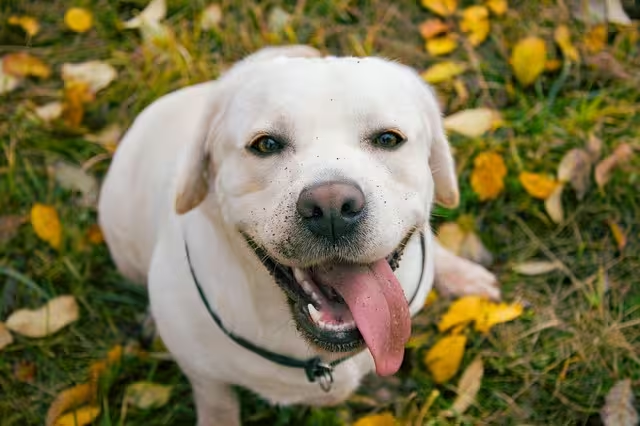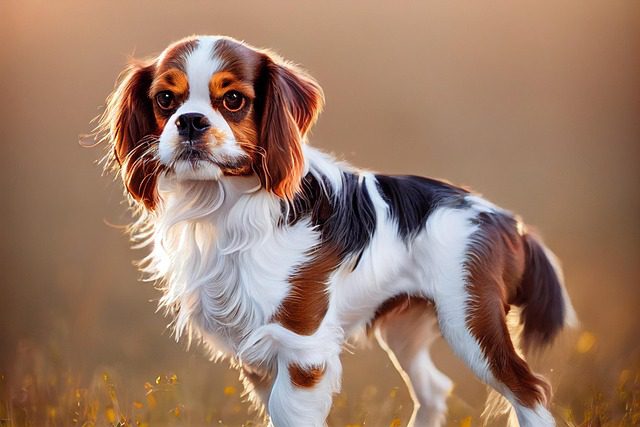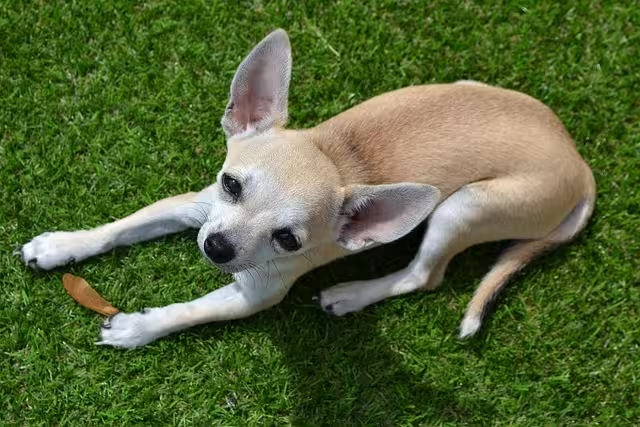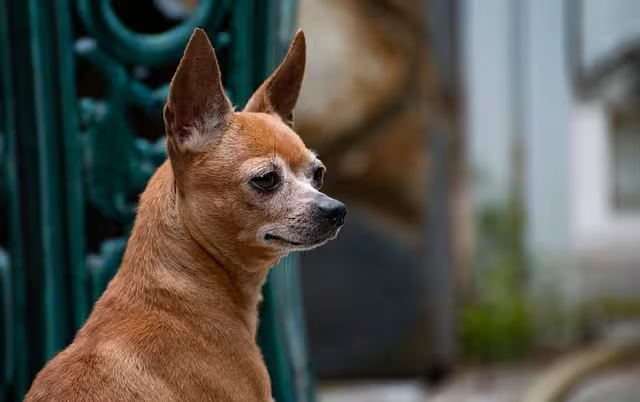When it comes to dog breeds, miniature dogs often capture the hearts of pet lovers worldwide· Their compact size and adorable appearance make them incredibly appealing· However, one aspect of miniature dog ownership that deserves attention is their grooming needs· In this comprehensive guide, we will delve into the grooming requirements of some of the most popular miniature dog breeds, exploring everything from coat types to bathing routines· With insights from the American Kennel Club (AKC) and expert notes, pet owners will find all the information they need to keep their furry friends looking and feeling their best.
Understanding Coat Types
Before we delve into the specific grooming needs of various dog breeds, It is crucial to establish an understanding of the different coat types that tiny pets may possess · The grooming requirements can vary significantly based on whether a dog has a short, medium, or long coat· This foundational knowledge forms the basis of effective grooming practices and is essential in ensuring that each dog receives the care they deserve, tailored to their unique coat characteristics· By recognizing the differences in coat types, pet owners can develop a grooming routine that not only keeps their canines looking their best but also supports their overall health and well-being·
The Ease of Caring for Short-Coated Breeds
Short coats are commonly found in breeds called the Dachshund and French Bulldog· These canines typically require less grooming than their long-haired counterparts, making them ideal for pet owners with busy lifestyles· A consistent brushing session, perhaps once a week, is often sufficient to remove loose hair and maintain the coat’s health· The short-haired breeds are generally less prone to matting, which can be a significant advantage for owners who may not have the time for extensive grooming routines· Moreover, short-coated pets often experience fewer skin issues, as their coats are less likely to trap dirt and moisture· This characteristic allows for a more straightforward grooming process, enabling pet owners to focus on other aspects of their dogs’ care while ensuring their pets look sleek and well-groomed·
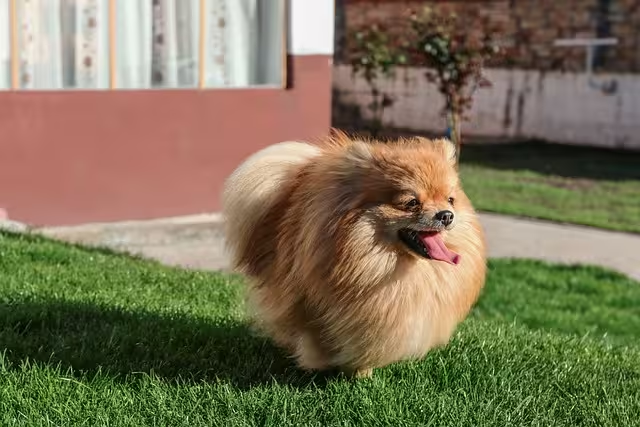
Grooming Essentials for Medium and Long-Coated Breeds
In contrast, medium coats, such as those seen in breeds like the Cocker Spaniel and Boston Terrier, command a bit more attention· These pets may require more frequent brushing, around two to three times a week, to prevent tangles and maintain a smooth, polished appearance· Routine grooming not only helps to distribute natural oils throughout their fur, promoting a healthy shine, but it also serves as an opportunity to inspect the skin for any signs of irritation or issues that may arise· This proactive approach to grooming is essential for medium-coated breeds, as it helps prevent matting and keeps their coats looking vibrant and healthy· Long-haired breeds, such as the Yorkshire Terrier and Maltese, present unique grooming challenges· For these canines, daily brushing is often recommended to prevent mats and tangles from forming in their luxurious coats·
The intricate nature of long hair can lead to knots and snags if not tended to consistently, making it imperative for owners to establish a routine that prioritizes daily care· Additionally, long-haired breeds may require frequent trips to the groomer for trims and specialized grooming techniques to maintain their beautiful looks · Grooming sessions can also serve as valuable bonding experiences between the dog breeds and owner, reinforcing trust and affection while ensuring that the dog’s coat remains healthy and stunning·
Grooming Needs of Popular Small Dog Breeds
1· Chihuahua
The Chihuahua is one of the most recognized miniature dog breeds in the world · With two coat varieties—short-haired and long-haired—Chihuahuas have different grooming needs·
- Short-Haired Chihuahuas: These pets require minimal grooming· A weekly brushing session will help remove loose hair and keep their coat looking sleek· Bathing can be done every few months or as needed, using a mild dog shampoo·
- Long-Haired Chihuahuas: These pets require more attention· Daily brushing is essential to prevent tangles and mats· Consistent trims around the ears, paws, and tail area can help maintain their appearance· Bathing should occur every 4-6 weeks to keep their coat clean and fresh·
2· Pomeranian
The Pomeranian is known for its fluffy double coat, which requires ongoing grooming to maintain its appearance and health ·
- Brushing: Pomeranians should be brushed at least three to four times a week, but daily brushing is ideal to prevent matting· A slicker brush works well to remove loose fur and keep the undercoat healthy·
- Bathing: These canines should be bathed every 4-6 weeks, using a gentle dog shampoo· It’s important to thoroughly dry their coat after bathing, as moisture can lead to skin issues·
3· Yorkshire Terrier
The Yorkshire Terrier is another popular compact variety, renowned for its long, flowing coat· ·
- Grooming Routine: Daily brushing is essential to prevent tangles and keep the coat smooth· A pin brush or a comb designed for long-haired pets is recommended·
- Bathing: Yorkies should be bathed every 3-4 weeks· It’s vital to use a high-quality dog shampoo to maintain the health of their skin and coat· Routine visits to a professional groomer can also help keep their hair in top shape.
4· Dachshund
The Dachshund comes in three coat varieties: smooth, long-haired, and wire-haired, each with different grooming needs·
- Smooth Dachshund: This type requires minimal grooming· Brushing once a week is usually sufficient to keep the coat shiny and healthy ·
- Long-Haired Dachshund: These dog breeds require more frequent brushing, ideally two to three times a week, to prevent matting· Routine trimming around the ears and paws can enhance their appearance·
- Wire-Haired Dachshund: This species benefits from periodic hand-stripping to maintain its wiry coat · A professional groomer may be necessary to achieve the best results·
5· Maltese
The Maltese is renowned for its stunning long, white coat, which requires careful grooming·
- Brushing: Daily brushing is crucial to prevent mats and tangles· A stainless-steel comb or a pin brush is ideal for maintaining the coat’s beauty·
- Bathing: Maltese dogs should be bathed every 4-6 weeks· Using a gentle, moisturizing shampoo will help keep their coat clean and soft· Routine trims, especially around the eyes and paws, are also recommended·
6· Pekingese
The Pekingese is a compact dog breeds type with a luxurious coat that requires significant grooming ·
- Brushing: These pets should be brushed daily to avoid tangles and mats· A slicker brush can help them manage their thick fur effectively·
- Bathing: Pekingese should be bathed every 4-6 weeks· Given their flat faces, care should be taken not to get water in their eyes or ears during the bathing process·
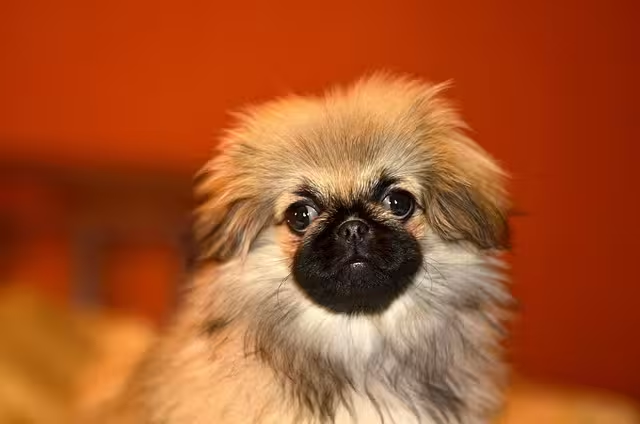
7· Shih Tzu
The Shih Tzu is another petite breed with a long and flowing coat that needs consistent maintenance
- Grooming Routine: Daily brushing is essential to keep their coat free of tangles and maintain its beauty· A combination of a pin brush and a comb will help with this process·
- Bathing: Shih Tzus should be bathed every 4-6 weeks· Using a gentle, tear-free dog shampoo will help keep their skin and coat healthy· Routine grooming appointments can help maintain their coat’s length and style·
General Grooming Tips for Dog Breeds
Regardless of the specific breed, There are fundamental grooming tips that can significantly enhance the well-being of miniature dogs · Routine veterinary check-ups are paramount, as they help ensure your dog’s overall health is in check· These visits can identify skin issues, allergies, or other health concerns that may affect grooming and general quality of life· By thinking ahead and scheduling these appointments, you can catch potential problems early, leading to a happier and healthier pet·
The Importance of Regular Nail Trimming
Another important aspect of tiny dog care is nail trimming· Tiny dogs often have fast-growing nails that require frequent attention to prevent discomfort or injury · Depending on the breed and their activity level, it is generally advised to trim their nails every 3-4 weeks· This practice not only keeps your dog breeds comfortable but also helps avoid potential injuries that can occur if their nails become too long· Many owners find it beneficial to learn how to trim their dog’s nails at home or to visit a professional groomer or kennel for assistance·
Essential Ear and Dental Care for Dogs
Additionally, ear cleaning is crucial for compact dogs, particularly those with floppy ears, as they are more susceptible to ear infections· Regularly checking and cleaning the ears with a vet-recommended solution can help prevent these issues from developing· Alongside ear care, dental hygiene is vital for compact breeds; Routine tooth brushing and dental chews can maintain good oral health and prevent dental diseases· By incorporating these practices into your grooming routine, you can help ensure your compact dog breeds remains happy and healthy.
What are the best practices for bathing dogs at home?
Bathing your miniature dog breeds at home is not just a grooming task; it can be a rewarding experience that strengthens the bond between you and your furry friend· However, approaching this process with careful consideration is vital to ensure your dog’s comfort and safety· In this guide, we will explore best practices for bathing miniature dog breeds, from preparation to post-bath care, ensuring a smooth and enjoyable experience for both you and your pup.
Preparing for a Stress-Free Bathing Experience
Preparation is key to a successful bathing session, so gather all necessary supplies before turning on the water· You will need dog shampoo specifically formulated for canine skin, as human shampoos can irritate your dog’s skin due to differing pH levels· Having a couple of absorbent towels on hand is essential for drying your dog breeds after the bath· It’s also important to use a brush suited to your dog’s coat type, which will help remove tangles and loose fur· Additionally, consider utilizing a non-slip mat in the tub to provide stability and security for your dog breeds, especially if they are a tiny breed recognized to be a bit skittish · A cup or handheld showerhead will make rinsing much easier, ensuring that your dog feels comfortable throughout the process·
Steps for a Comfortable Dog Breeds Bathing Experience
When it comes time to bathe your dog breeds, always start with lukewarm water to avoid discomfort· Gradually wet your dog’s coat, beginning at the back of the neck and moving downward, all while being cautious around their face· After wetting, apply a minimal amount of dog shampoo and massage it into their fur, taking care to avoid the eyes and ears· Rinse thoroughly to ensure no shampoo is left behind, which could lead to skin irritation· When cleaning your dog’s face, use a damp cloth to avoid pouring water directly over their head· After bathing, gently towel dry your dog and, if they have a long or thick coat, use a blow dryer on the lowest heat setting· Always monitor your dog for signs of discomfort during this process· Finally, don’t forget to reward your dog breeds with praise or treats after the bath, reinforcing a positive association with this grooming routine, and ensuring that their spirit and intelligence shine through as they meet each bathing challenge head-on·
Are there any tips for bathing a dog with long, matted fur?
Bathing a dog breeds with long, matted fur can seem overwhelming, but with a thoughtful approach, you can create a more comfortable experience for your furry friend· Matted fur is not just an aesthetic issue; it can trap dirt, moisture, and debris, leading to potential skin problems if left unaddressed· To ensure your dog’s comfort and hygiene, it’s essential to take the time to assess the mats and prepare them effectively before the bath· This preparation can make a significant difference in both the bathing process and your dog’s overall well-being, particularly for breeds known for their mental sensitivity, such as terriers, which are often bred for companionship· Recent experiences have shown that a calm and patient approach can help ease anxiety, making bath time a positive experience rather than a stressful one·
Assessing and Addressing Matting Before Bathing
Before you begin bathing, it’s crucial to assess the extent of the matting in your dog’s coat· Gently running your fingers through the fur will help you identify problem areas· If the mats are minor, using a comb or brush to work them out before getting your dog breeds wet can be effective· However, if the mats are severe or widespread, it may be wise to consult a professional groomer· Attempting to detangle heavily matted fur can be painful for your dog and might exacerbate the issue, especially if they are a particularly sensitive breed· Taking the time to think through your approach will help ensure your dog remains comfortable during what can be a challenging process·
Essential Supplies for a Smooth Bathing Experience
Preparation is vital for a successful bathing experience, so gather all necessary supplies before turning on the water· You will need high-quality dog shampoo, a detangling spray, a slicker brush, a wide-toothed comb, towels, and a non-slip mat· Using a detangling spray designed for dogs can significantly ease the process of working through mats· Start by brushing your dog’s coat thoroughly with a slicker brush, focusing on the matted areas and gently working from the ends of the hair towards the roots· This initial grooming will not only help prevent further matting but also make the subsequent bathing process much more manageable·
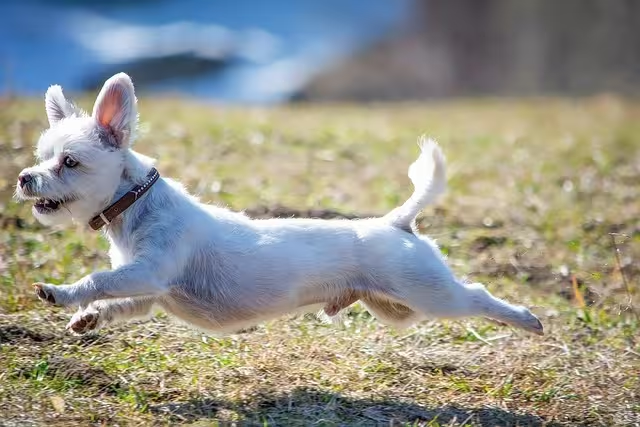
Gentle Bathing Techniques for Your Dog Breeds
When it’s time to bathe your dog breeds, follow a few essential steps to ensure a gentle wash· Always use lukewarm water, as this temperature is comfortable and will help open the hair shafts for easier cleaning· Gradually wet your dog’s coat, starting from the back of the neck and moving downwards, and be cautious around the head to avoid overwhelming them· Once your dog is wet, apply a slight amount of dog shampoo, concentrating on the matted areas, and then rinse thoroughly to avoid skin irritation· After the bath, gently dry your dog breeds with an absorbent towel, and if they have a long coat, consider using a blow dryer on the lowest heat setting—always keeping it at a safe distance· Routine grooming and timely baths are essential for preventing future matting and ensuring that your dog remains comfortable and healthy in their living environment·
Conclusion
Grooming is an essential part of caring for little dog breeds, and understanding their specific needs can help ensure a happy and healthy life for your furry friend· From the low-maintenance Chihuahua to the high-maintenance Maltese, each breed has its unique requirements that should be carefully considered·
By providing regular grooming, including brushing, bathing, and nail trimming, pet owners can keep their little dogs looking their best while promoting their overall health and well-being · Whether you choose to take your dog breeds to a professional groomer or tackle grooming at home, the effort you invest will be rewarded with a happy, healthy, and beautiful companion·
Ultimately, understanding and meeting the grooming needs of your toy dog breed will enhance their appearance and strengthen the bond between you and your furry friend· Embrace the joys of grooming and enjoy the companionship of these delightful toy dog breeds for years to come.


